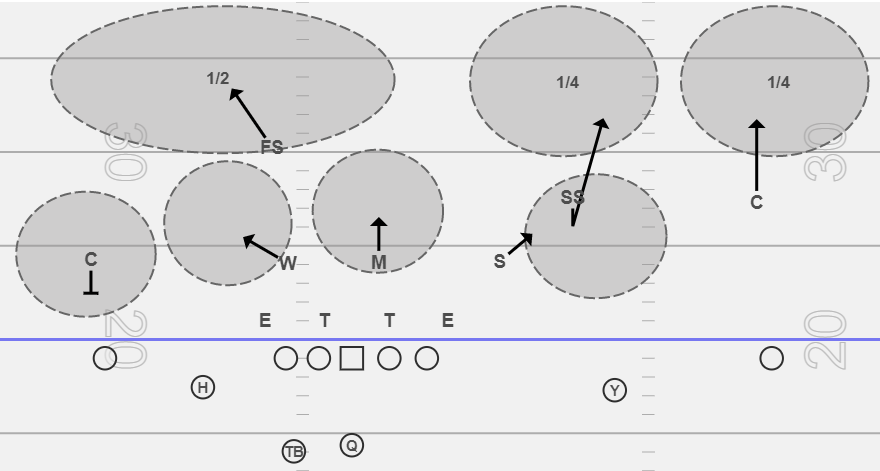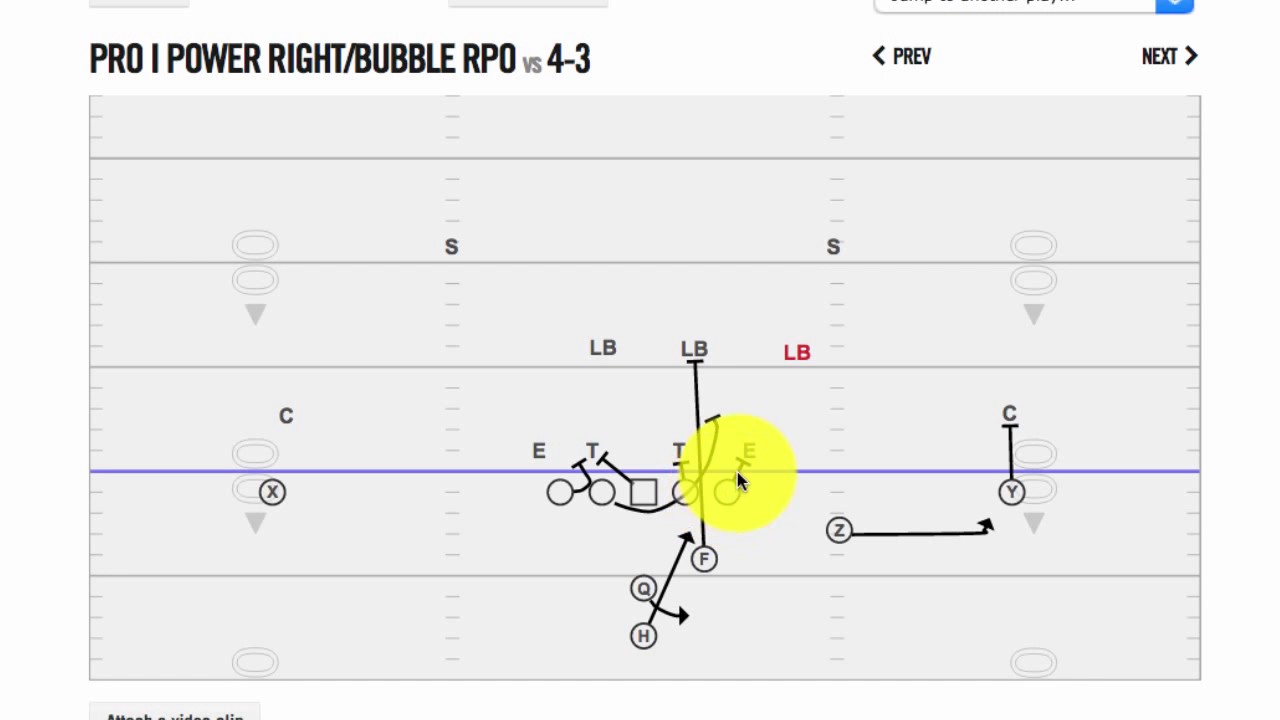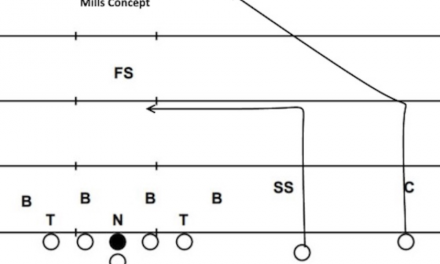This is Part 5 in our series of articles on coverage recognition where we talk about the Cover 6 defense.
Our goal is to put both your mind and your quarterback’s mind at ease during the season.
Today we will discuss what it is, how to identify it, and what you can do to attack a Cover 6, or Quarter-Quarter-Half Coverage.
Here are the other articles on defensive coverage recognition for quick reference:
EXPLAINING COVER 6 DEFENSE
Cover 6, or what most coaches refer to as Quarter-Quarter-Half Coverage (Figure 1) is explained well by its name, as it is a hybrid of two coverages. As you can see from the figure above, the boundary side is playing Cover 2, while the field side is playing Cover 4.
HOW TO IDENTIFY COVER 6
There are two ways you can help your quarterbacks determine that Cover 6 is being played. One is in the pre-snap, and the other is in the post-snap.
In the pre-snap, if a quarterback knows that a team will play some Cover 6 throughout the game, take a look at their corners. In the 2-High coverages we discussed earlier in this series, Cover 2 and Cover 4, the corners both have the same job. This creates similarity in their body language and leverage on the outside receiver. But in Cover 6, the corners do not have the same job, therefore, oftentimes you can see by their differing body language that they are playing two separate coverages in the pre-snap. And the great thing about getting this particular pre-snap read, is that you can also tell which side is playing Cover 2 and which side is playing Cover 4.
In the post-snap, I would recommend eyeing the safeties to see how they are backpedaling. In Cover 2, safeties are usually taught to get off of the hash, stemming their backpedal toward the sideline. In Cover 4, safeties are most likely to backpedal directly backward as they do not have to get off of the hash toward the sideline. The corner on their side has that deep quarter, and if anything, they begin to move inside the hash to get to the center of their coverage responsibility. If they do not have the same post-snap demeanor, they are not playing the same coverage.
HOW TO ATTACK A QUARTER QUARTER HALF DEFENSE
There are a few safe and efficient ways to attack a Cover 6 defense, and if you have Cover 2 and Cover 4 beaters in your passing game you already have what you need.
One train of thought is to use 2×2 concepts that have a Cover 2 beater on one side and a Cover 4 beater on the other like you might do if teams are rolling to and from different 1-High and 2-High coverages. This is a great idea if you know that the team will play Cover 2 to the short side of the field, and playing Cover 4 to the wide side of the field. That being said, if you play a team that is able to play this coverage with quarters to either side, this will not work, as you may have the wrong concept run on the wrong side. Therefore, choosing a mirrored concept like Go-Out to both sides would be a better bet, as the concept will work against both coverages. If you go this route, look for space first, and matchup second.
Another idea is to load one side of the field formationally. Or, if you are a heavy 2×2 team, run your boundary #2 across the field. You can also motion or send your tailback into a route to a field. All of these options are difficult for any 2-High coverage, because one of their deep defenders becomes useless. Load that side of the field, especially with the idea of replacing a displaced field safety or flat-defender with another player, and take your chances that way. But make sure to do everything in the post-snap. You do not want to get them out of the coverage if they are a team that adjusts to 3×1 or 4×1 sets.
My first go-to would be to run the ball, especially an RPO-based QB Draw. If a team is going to play Cover 6, one of their linebackers is going to have to sprint to the flat on the snap of the ball. Regardless of which one it is, this will guarantee that you will have a maximum of six defenders in the box. If you have a running back that can simply get in somebody’s way, you have a great play on your hands, even in a situation that would normally suggest a pass.
Finally, if you are having difficulty in practice figuring this out or designing plays against it, start running the ball. The more you run the ball in a game, or the better you are at running the ball in general, the less Cover 6 you are going to get. No team is going to want to have both of their safeties backpedaling while you are giving it to your best player. Running the ball is going to be the best answer to frustrating nearly every passing game problem.
CONCLUSION
This coverage may be something you will never see or maybe something you did not know about but have actually been missing for years. It’s great to be able to see all of the things defenses may do in the off-season, so you can begin troubleshooting and coming up with options just in case you happen to run into something odd with a game. If you are a team that believes they will not see this or will see it infrequently, I would still suggest having a play you practice that you can call in a game that will allow your quarterback to be successful if teams are using it.




